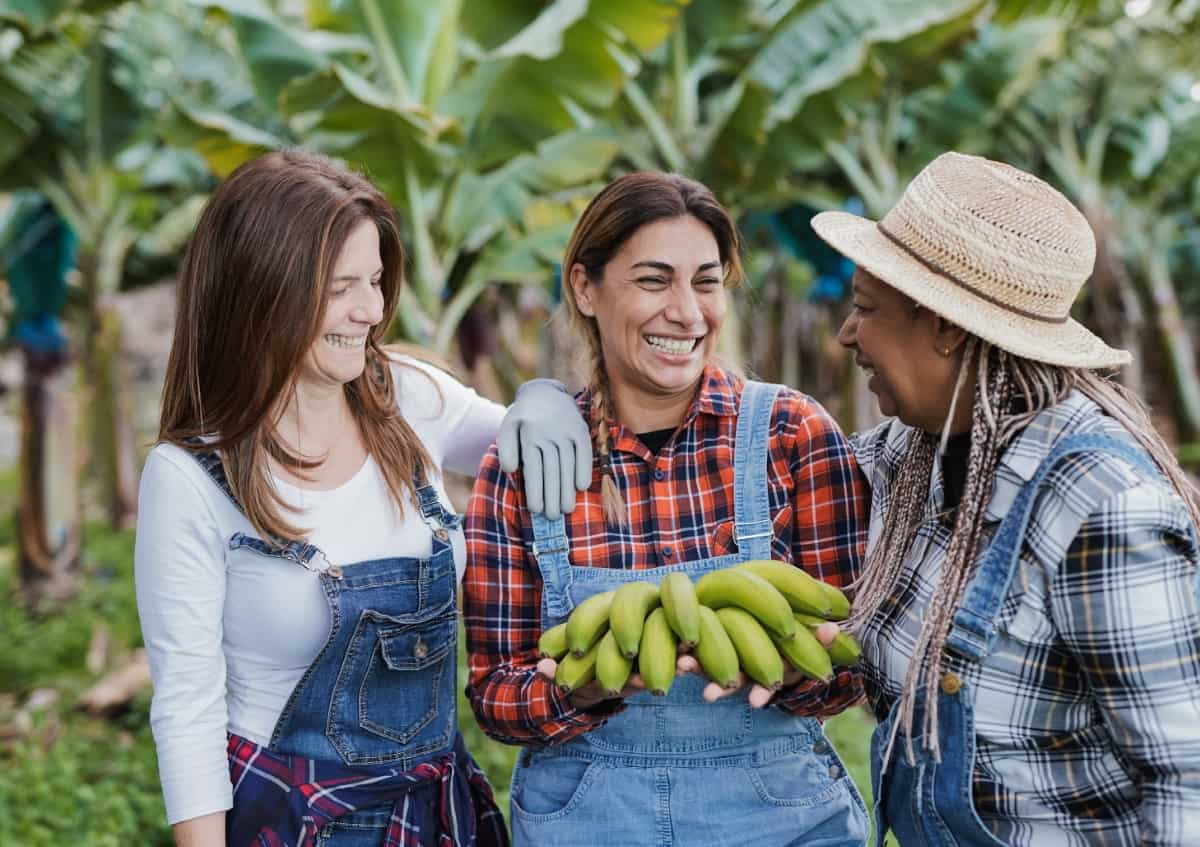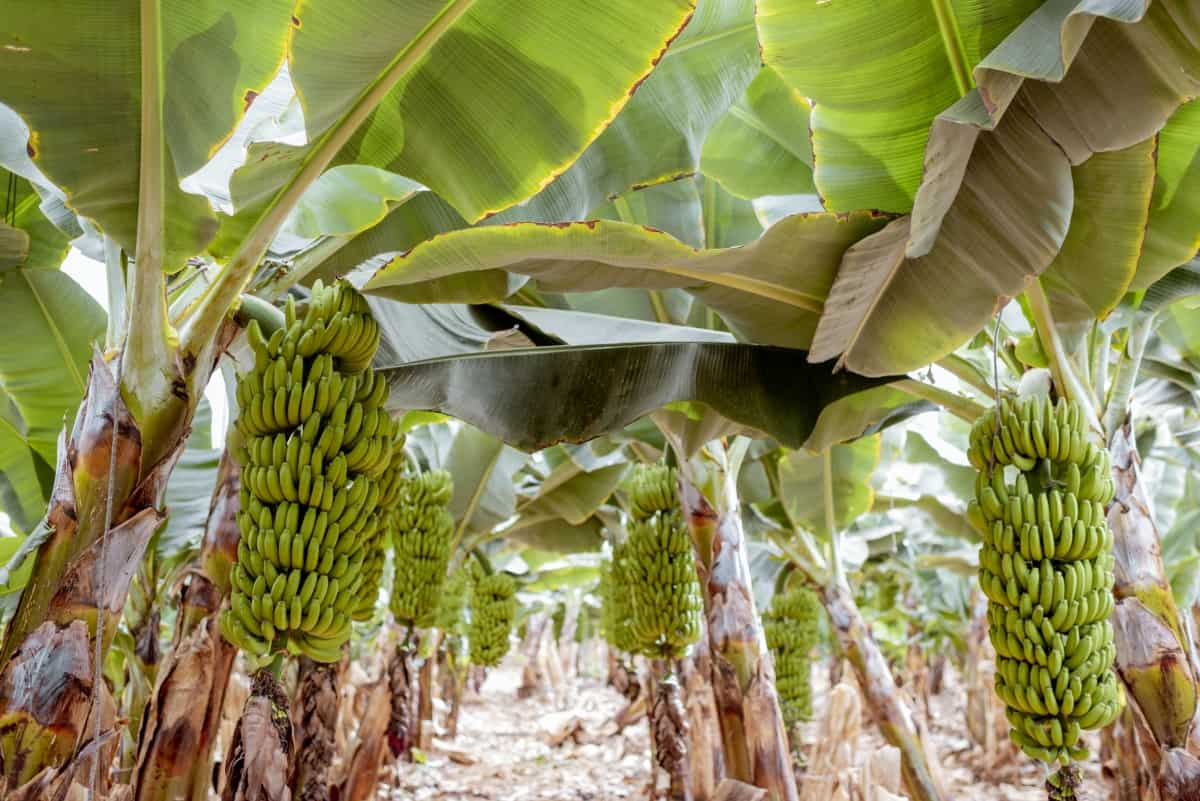Banana farming can be a lucrative venture, but like any agricultural activity, success requires careful planning and execution. Farmers often make common mistakes that can impact the productivity and profitability of their banana farms. By avoiding these common mistakes and adopting good agricultural practices, banana farmers can enhance the overall productivity and sustainability of their operations. Continuous learning and adaptation to changing conditions are key to success in banana farming.

Common Mistakes to Avoid in Banana Farming
Choosing the Wrong Banana Variety
Selecting the appropriate banana variety is crucial for successful farming. Common mistakes include neglecting local climate considerations, soil type, and disease resistance. Farmers often opt for popular varieties without assessing their compatibility with the region’s conditions. This can lead to poor yields and increased susceptibility to pests and diseases.
It’s vital to conduct thorough research and consult local agricultural experts to determine the most suitable banana variety for the farming area’s specific climate and soil conditions. Ignoring this aspect may result in financial losses and hamper overall productivity.
Inadequate Soil Preparation in Banana Plants
In banana farming, insufficient soil preparation is a prevalent mistake that adversely affects plant growth. Farmers often neglect proper soil testing and preparation, leading to inadequate nutrient levels and poor drainage. Bananas require well-draining soil rich in organic matter. Failing to address these factors can result in stunted growth, reduced yield, and increased disease susceptibility.
Effective soil preparation involves incorporating organic matter, adjusting pH levels, and ensuring proper drainage to prevent waterlogging. Farmers should also consider mulching to retain soil moisture. Ignoring these crucial steps can lead to nutrient deficiencies, hinder root development, and ultimately impact the overall health of banana plants.
Improper Planting Techniques in Banana Farming
One more common mistake in banana farming is improper planting techniques. Farmers often neglect essential factors such as choosing the right planting material, depth of planting, and proper spacing between plants. Using low-quality or diseased suckers, inadequate soil preparation, and improper planting depths can lead to stunted growth and reduced yields.
Following recommended guidelines for planting bananas is crucial, ensuring that each step is meticulously executed. Farmers should invest time in understanding the ideal conditions for banana cultivation, including soil type, drainage, and microclimate considerations. Farmers can promote healthy growth and maximize their banana harvests by avoiding haphazard planting practices.
Neglecting Proper Irrigation for Banana Plants
Neglecting proper irrigation is another significant mistake in banana farming. Bananas are water-sensitive, and insufficient or excessive watering can harm plant health. Inadequate irrigation can lead to drought stress, resulting in smaller fruit sizes and lower yields. On the other hand, overwatering leads to root rot and other fungal diseases.
In case you missed it: How to Stop Flower Drop and Fruit Drop in Banana: Get More Yields with These Proven Techniques

Farmers must establish a well-planned irrigation system, considering factors such as soil moisture levels, climate, and the specific water needs of banana plants. Regular monitoring and adjusting irrigation practices throughout the growing season are essential to ensure optimal water supply for healthy banana plants and maximize fruit production.
Insufficient Fertilization of Banana Plants
Insufficient nutrients can result in stunted growth, reduced fruit production, and increased disease susceptibility. Farmers should conduct regular soil tests to determine the specific nutrient needs of their banana plants and apply appropriate fertilizers accordingly. Nitrogen, phosphorus, and potassium are crucial for banana growth, and a balanced fertilizer regimen is essential throughout the plant’s life cycle. Over-fertilization, however, should be avoided as it can lead to environmental issues and affect plant health. Proper fertilization is pivotal for optimal banana yield and quality.
Failure to Control Pests and Diseases in Banana Plantation
Another prevalent mistake in banana farming is the neglect of pest and disease management. Failure to implement effective control measures can lead to significant crop losses. Banana plants are susceptible to pests like nematodes, mites, and diseases such as Panama disease and Black Sigatoka. Regular monitoring, early detection, and timely application of appropriate pesticides are crucial to prevent infestations and outbreaks.
Integrated pest management (IPM) strategies, including cultural practices and biological control methods, should be employed to minimize reliance on chemical pesticides and reduce environmental impact. Neglecting pest and disease control jeopardizes the overall health and productivity of the banana plantation, emphasizing the need for proactive management practices.
Lack of Regular Pruning of Banana Plants
Pruning is essential for maintaining plant health, controlling disease spread, and promoting optimal fruit production. Failure to prune can lead to overcrowded canopies, limiting sunlight penetration and air circulation. It creates a favorable environment for pests and diseases. Additionally, uncontrolled growth may divert nutrients from fruit development, reducing overall yield and quality.
In case you missed it: How to Create a Banana Farming Business Plan: Optimizing Banana Farm Operations

Farmers should establish a consistent pruning schedule to avoid this, remove dead or excess leaves, and maintain an open canopy for improved airflow and sunlight exposure. Regular pruning enhances the overall health of banana plants, contributing to higher productivity and better fruit quality.
Ignoring Proper Weed Management in Banana Farming
Weeds compete with banana plants for nutrients, water, and sunlight, negatively impacting growth and yield. Ignoring proper weed control can result in stunted plant development, reduced fruit size, and increased susceptibility to diseases. Herbicides, mulching, and manual removal are common weed management practices.
Combining these methods helps maintain a weed-free environment, allowing banana plants to thrive. Farmers should prioritize weed control throughout the banana cultivation cycle, from planting to harvesting, to ensure optimal resource utilization and maximize the yield potential of their banana farms.
Improper Harvesting Methods of Banana
Improper harvesting is a common mistake in banana farming that can adversely affect yield and quality. Harvesting too early or too late can lead to underripe or overripe bananas, impacting market value. Using sharp tools, such as machetes, is crucial to prevent damage to the plant and ensure a clean cut. Additionally, improper handling during harvest can result in bruising and contamination. Farmers should be trained in proper harvesting techniques, including the correct angle and timing for cutting, to maximize banana quality and marketability.
Neglecting Post-Harvest Handling and Storage of Banana
Neglecting post-harvest handling and storage is another critical mistake in banana farming. After harvesting, bananas are susceptible to physical and environmental damage, leading to premature ripening and spoilage. Inadequate storage facilities and improper handling during transportation can further exacerbate these issues.
In case you missed it: Watering Techniques and Irrigation Systems in Banana Plantation

Proper post-harvest practices, such as prompt cooling, adequate ventilation, and controlled humidity, extend shelf life and maintain banana quality. Farmers must prioritize investing in proper storage infrastructure and adhere to recommended post-harvest handling protocols to minimize losses and maximize profits.
Conclusion
In conclusion, successful banana farming requires careful consideration and avoidance of common mistakes. Neglecting these key aspects can lead to reduced yields and financial losses. Staying informed about updated farming practices and seeking professional advice will contribute to banana cultivation’s overall success and sustainability.
- Feed Your Flock for Less: Top 10 Tips to Save on Chicken Feed
- Ultimate Guide to Ossabaw Island Hog: Breeding, Raising, Diet, and Care
- Hatching Answers: The Top 10 Reasons Your Chickens Aren’t Laying Eggs
- Eggs and Economics: Breaking Down the Cost of Raising Backyard Chickens
- Defend Your Greens: Proven Methods to Keep Iguanas Out of Your Garden
- Ultimate Guide to Cinnamon Queen Chicken: A Comprehensive Guide for Beginners
- Ultimate Guide to California Tan Chicken: Breeding, Raising, Diet, Egg-Production and Care
- Ultimate Guide to Marsh Daisy Chicken: Breeding, Raising, Diet, and Care
- 10 Types of Chicken Farming Businesses You Can Start for Profits